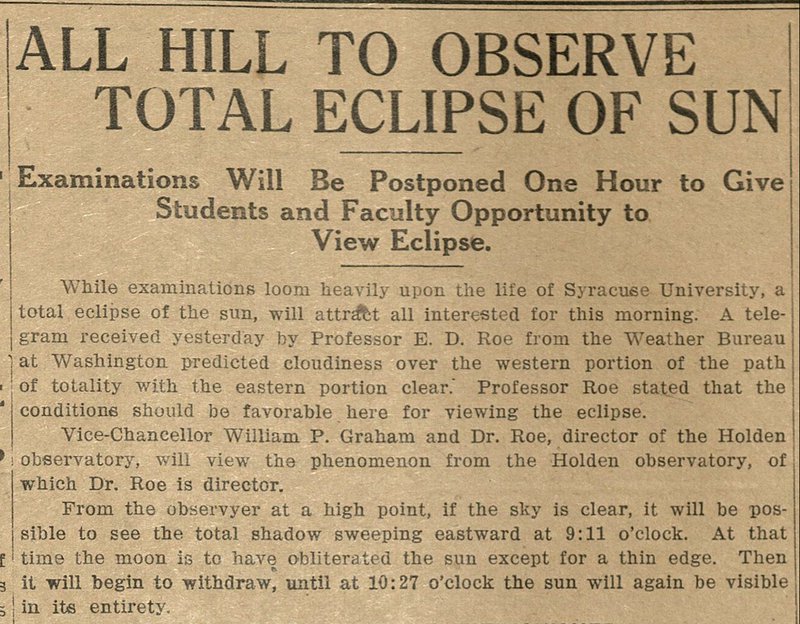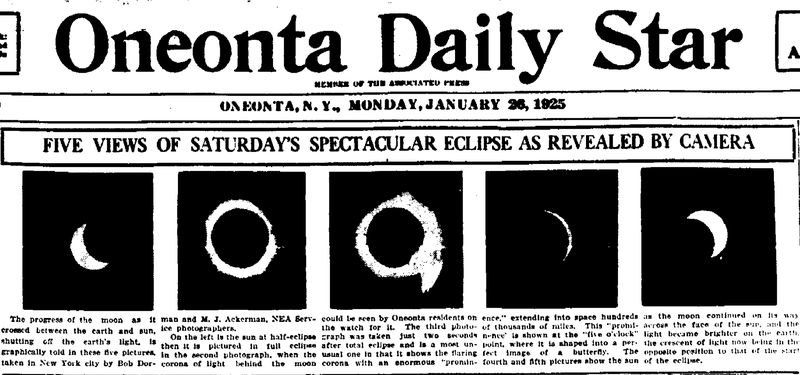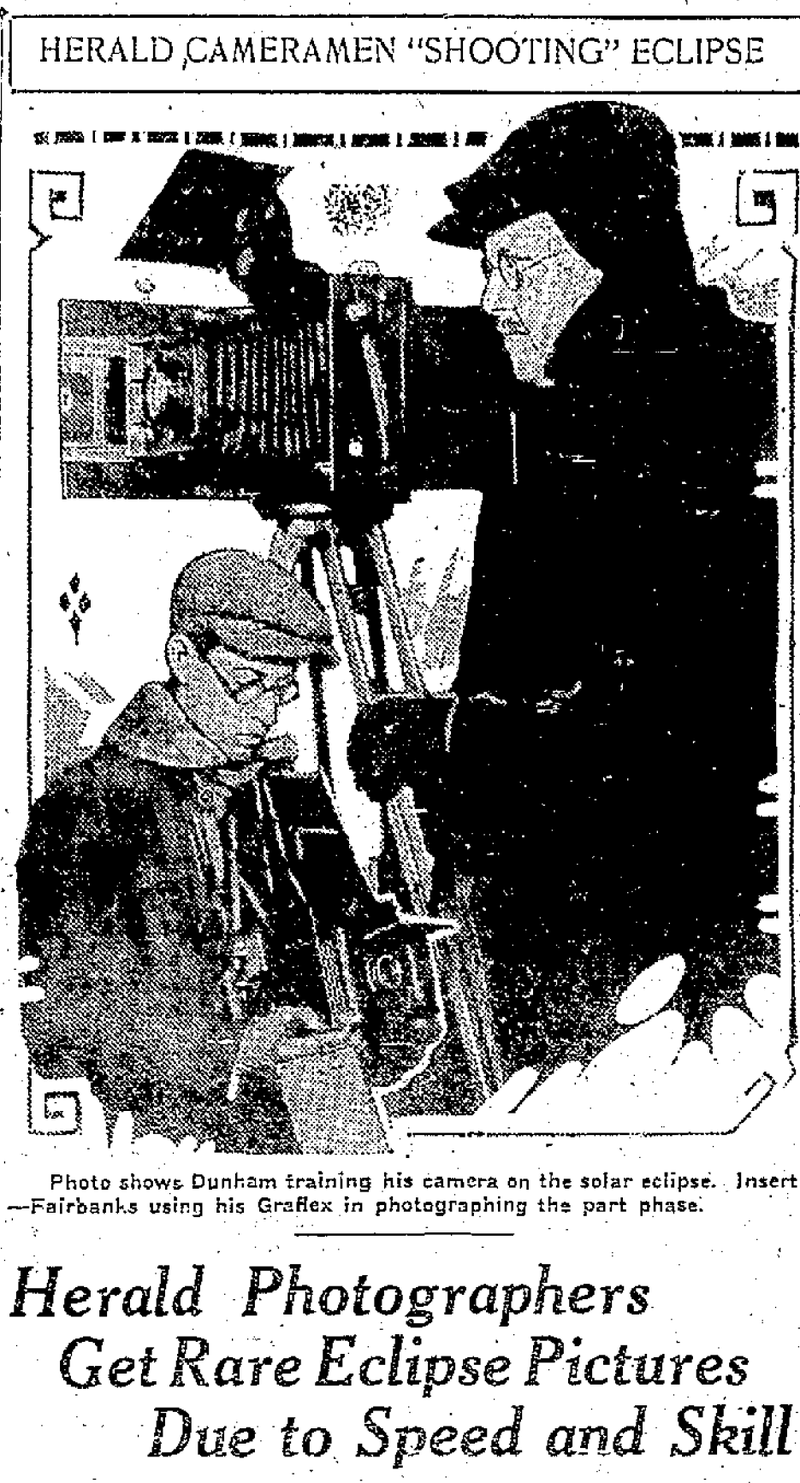A Historical Look at Eclipses in CNY

Map showing the 2017 and 2024 paths of totality. (Image courtesy: NASA)
The last total eclipse in the United States was on August 21, 2017. Faculty, staff and students who were on campus celebrated the occasion with a viewing party on the Quad. The main difference from 2017 to 2024 is that the Syracuse campus will now be in the path of totality, whereas in 2017 it was a partial eclipse with totality stretching from the northwest to the southeast United States.
Watch a video of the 2017 campus event produced by Syracuse.com:
Turning Back the Clock
The last time Syracuse was close to the zone of totality was nearly a century ago on January 24, 1925, when a total solar eclipse passed through New York. The path of totality on that date was only six miles south of Syracuse, as noted in the map below.

(Image courtesy: Today in Connecticut History)
According to an article printed in the Syracuse Daily Orange (DO) on January 24, 1925, examinations scheduled for 9 a.m. were postponed by one hour so students and faculty could view the eclipse (which was projected to peak at 9:11 a.m.).


(Image courtesy: The Daily Orange Collection, University Archives, Special Collections Research Center, Syracuse University Libraries)
Viewers on campus used smoke glasses and other instruments to observe the eclipse, which was unfortunately blocked by clouds, as stated by the DO. William P. Graham, the University's Vice Chancellor at that time, and Dr. E.D. Roe, Jr., who was director of Holden Observatory, attempted to photograph the eclipse from the observatory, but overcast conditions thwarted that effort.
Similar to the extensive coverage the 2024 eclipse is garnering in the news today, the 1925 eclipse made headlines across Upstate New York and nationally. Below are some historical newspaper photos from the event.

The Oneonta Daily Star published a series of images showing the stages leading up to and following totality.

The Syracuse Herald printed an image of photographers who were capturing the 1925 eclipse. While the look of cameras has changed over the last century (hello, cell phones!), the sense of awe and excitement people feel leading up to and during the eclipse remains the same.
